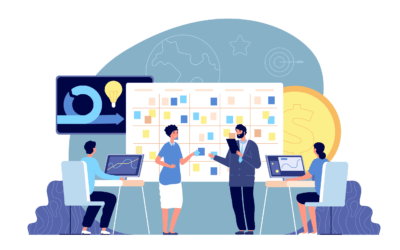How to Generate Documents from Salesforce Data
Salesforce is a well-established and respected CRM and technology platform. While it offers a vast array of features, customers sometimes need more than what it offers.
This is where the AppExchange and the huge number of app vendors come in. To get more features, just install an app with a few clicks and make Salesforce more powerful.
There are many categories of app and we will examine them in future articles.
This guide is about the “Docgen” category. These apps let you make documents from your Salesforce data.
Key Takeaways
- Save time – generating documents from Salesforce data streamlines manual admin tasks
- Consistency – using a Docgen app ensures documents follow your brand guidelines everytime
- Respond faster – send prospective customers sales quotes in a couple of clicks
Why Generate Documents from Salesforce Data?
Salesforce data can automate the creation of reports, invoices, and paperwork. This makes administrative tasks more efficient in business operations.
Docgen apps take data from Salesforce and merge it into pre-formatted MS Word templates to make the final document.
This saves you time and resources and enables you to concentrate on more important tasks.
Choosing a Docgen App
When selecting a Docgen app for Salesforce, consider a few key features.
- Usage Limits: estimate how many documents your users will create each year. Then, compare this number with the quotas set by the app.
- Automation: The app must seamlessly integrate with your existing workflows. It should automate document generation as part of your day to day processes.
- Try before you buy: to ensure the app is a good fit for functionality and ease of configuration, try it out first.
- Support: the vendor should provide online resources such as guides and videos. Their support team should respond to you within one day.
- Ongoing improvements: Choose an app vendor who is continually improving their product. Releasing new features that give you more value from your investment.
The best Docgen app for you is the one that balances automation, workflow integration, ease of use and pricing.
What Types of Document Can You Create using a Docgen App?
The simple answer is anything you like. If you can create it in MS Word, your Docgen app can automate it.
Some common examples are sales quotes, orders, invoices, contracts, and account summaries. Documents will be created using your company branding, logo and styling
Let’s take a closer look.
Sales Quotes and Orders
Generate a Sales Quote or Order document that contains the following information:
- Customer name and address
- Customer contact details
- Order number and date
- Order details including quantities and pricing
- Special notes relating to the order
Using Docgen in your sales process means you can send prospective customers a quote in seconds.
You could even give prospects the ability to request a quote online. Salesforce will generate and automatically send the quote to them.
Curious to see how this works? Give our online demo a try.
The automation of this process reduces human error and increases efficiency. Docgen apps produce documents that are accurate and have a consistent format for a professional appearance.
This technology has revolutionised the way businesses manage their sales quotes and orders.
It has made the Sales process seamless and more efficient, saving time and resources.
Invoices
Docgen apps can generate and send invoices from Salesforce data. This helps you stay on top of cashflow generation.
Invoicing data stored in Salesforce also feeds into reports and dashboards giving you valuable insights on demand.
Automation ensures efficiency and accuracy, reducing the risk of human error.
Contracts
Another popular use case is to generate a Contact using a Docgen app.
Contracts can incorporate the following information from Salesforce records:
- Client legal entity details
- Product and service details
- Pricing information
- Contract start and end dates
- Cancellation information and dates
- Renewal information and dates
- Your standard terms and conditions
- Product / service specific terms and conditions
- Customised terms and conditions
Draft contracts can be circulated to colleagues for approval before being issued.
Once completed, the contracts can be distributed to customers straight from the Salesforce platform. This eliminates the need for manual distribution techniques like emailing and promotes a more efficient workflow.
You may dramatically boost productivity by including an e-signature tool into your procedure. Read our explanation of how this works here.
Account Summaries
Perhaps less obvious, but generating documents for internal use can also be valuable.
For example, creating an account summary report. This gathers up-to-date information about a selected account, surfacing useful insights and fueling decision making.
Details to include in this type of report include:
- Account name and location(s)
- Amount of closed won business to date
- Amount of potential business in your pipeline
- Key contacts
- Interaction history for the last 6 months (or any time period you specify)
- Next steps for each Opportunity
- Survey results on customer satisfaction
- Support ticket history for the previous six months
This sort of report summarises crucial account details in a single click. When going into a meeting, this information is invaluable.
This report is often known as a “taxi report” because sales professionals can create it on their mobile phone or tablet while travelling to a meeting.
How Can Docgen be Incorporated into Your Workflow?
Including Docgen into your workflow may appear complicated at first. However, given how it can dramatically simplify the process of generating documents from your Salesforce data, it is well worth the effort.
The first step in incorporating Docgen into your workflow is to determine the types of documents you commonly generate and the Salesforce data they require. Client reports, invoices, contracts, and other business documents may fall under this category.
Once you’ve created the document templates and set up the Docgen application to generate the documents you need, it’s time to incorporate them into your processes.
As with all things Salesforce, there are a number of ways to do this:
- Add a button to your record page– when users want to generate a document, they just click the button. Add a “Generate Quote” button to the Opportunity page, for example.
- Automatically via Flow – produce and send an email when a record is generated or modified. For example, when a prospect fills out an enquiry form, which generates a Lead, instantly send them a tailored sales document (try this in our demo here).
- In bulk on a schedule – Docgen programmes can mass produce and and email documents on a regular basis if you generate them frequently. Sending invoices to customers, for example.
Can Docgen Apps do More Than Just Create Documents?
Of course – additional features include:
- Generating documents as PDFs
- Generating documents as Microsoft PowerPoint decks
- Attaching documents to the Salesforce record (for example the Opportunity)
- Automatically emailing the document to one or more recipients
- Incorporating other documents into the finished output (for example product sheets)
Tips and Tricks When Using a Docgen App
Having created solutions featuring Docgen apps many times over the years, we’ve picked up a few tips and tricks that are worth sharing.
Perform Logic and Calculations in Salesforce, Not the Document
One handy tip for using a Docgen App effectively is to perform most logic and calculations within Salesforce itself, rather than in the document.
Why?
Microsoft Word does have the ability to calculate totals or conditionally display specific wording, but it’s fiddly. We recommend carrying out any calculations inside Salesforce, and then merging the finalised output into your document.
Create a Standardised Document Template Numbering System
When you start creating documents with a Docgen app, you’ll likely discover more and more use cases to integrate. And naturally, this means creating more document templates in MS Word.
We highly recommend creating a naming convention for all these templates, including version numbering. This will allow you to keep track of which document template is which, as well as the most recent version.
And in case you were wondering, you can define the name of a document when creating it. For example, “Sales Quote for Customer ABC – Dec 2023“
Store Generated Documents in SharePoint
Storing generated documents in Salesforce, and attached to the relevant record makes things easy for users.
A sales agent can immediately view the quote, order or contract directly from the Account or Opportunity record.
That’s great news for your Salesforce users. But what if other team members require access to documents but do not have a Salesforce licence?
Some Docgen apps can directly publish documents to other repositories like SharePoint or Google Workspace. This might require the use of an additional app, but it is worth exploring because it could give a wider audience access to useful documents.
Frequently Asked Questions
What Are the Different Types of Documents That Can Be Generated From Salesforce Data?
Salesforce data can be used to generate various types of documents, including reports, invoices, quotes, contracts and customer correspondence, among others, enhancing the efficiency and accuracy of business operations.
What Are the Common Challenges Faced During Document Generation in Salesforce?
Creating basic document templates is often straight-forward and takes only a few hours from start to completion.
If you have complex data relationships, very specific formatting requirements, complex business logic or want to incorporate images into your output documents, you will need to carry out careful analysis and design.
Are There Any Specific Security Considerations When Using a Docgen App?
You should check with vendors where data is processed to make sure it complies with your company policies. Docgen apps should not retain any data on their servers once processing has been completed, but again we recommend confirming this point directly with the vendor.
Another point to check with the vendor is whether data extracted from Salesforce is encrypted for maximum security.
How Does Document Generation in Salesforce Impact Data Management and Reporting?
Management reporting document templates can be created and populated with data on demand or at predefined times of the year (for example, month or quarter end).
If you are considering doing so, some Docgen apps can transfer data to Excel, which can then be processed and incorporated into the final result.
This can open the door to more sophisticated use cases, but does require more advanced knowledge to design and build.
Conclusion
Using Docgen software to generate documents simplifies and streamlines operations, saving substantial time and resources.
Docgen apps don’t need coding skills but do require a good understanding of Salesforce setup and configuration. We would therefore recommend involving your Salesforce System Administrator when configuring a Docgen based solution.
If you want any further information or a hands-on demo, send us a message. We’re here to help.





